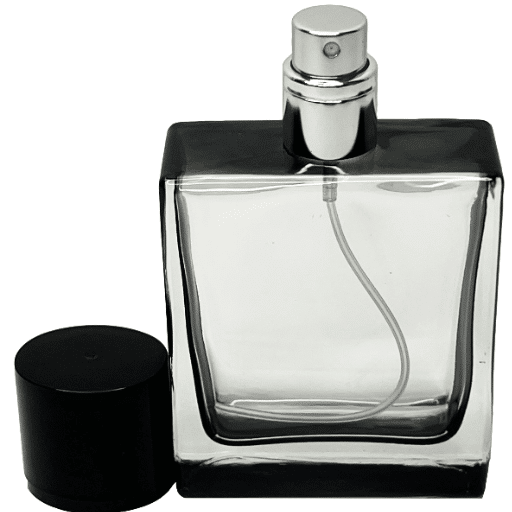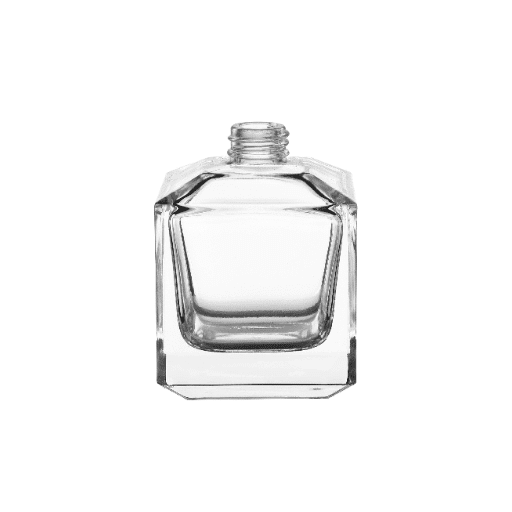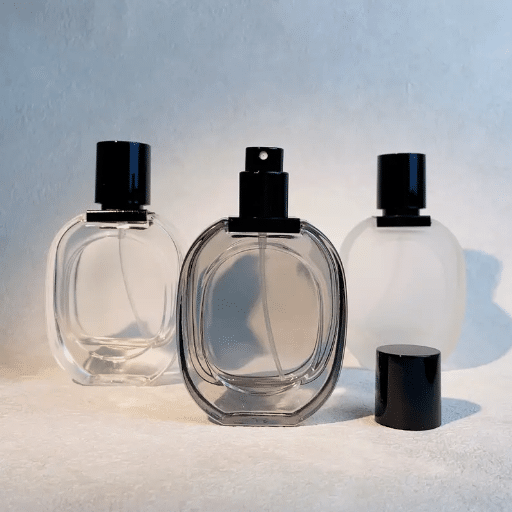When it comes to selecting the ideal perfume bottle, the decision entails much more than mere aesthetics. Whether you are a perfumer seeking the perfect container for your latest creation or a consumer looking for functionality and flair, the choice of a perfume bottle plays a crucial role in preserving the fragrance, enhancing its presentation, and elevating the overall user experience. This guide is designed to demystify the process, offering insights into the key factors to consider—ranging from material quality and design to functionality and sustainability. By the end, you’ll be equipped with the knowledge to make an informed decision that aligns with your needs, ensuring your fragrance not only smells exquisite but looks exceptional as well.
What are the Different Perfume Bottle Sizes Available?

Perfume bottles are available in a variety of sizes, including 5ml, 10ml, 15ml, 30ml, 50ml, 75ml, 100ml, 150ml, and 200ml.
|
Size (ml) |
Ideal Use |
Travel-Friendly |
Refillable |
|---|---|---|---|
|
5ml |
Sample size |
Yes |
No |
|
10ml |
Pocket travel |
Yes |
Optional |
|
15ml |
Short trips |
Yes |
Optional |
|
30ml |
Daily use |
Moderate |
Optional |
|
50ml |
Standard size |
Moderate |
Yes |
|
75ml |
Occasional use |
No |
Yes |
|
100ml |
Popular option |
No |
Yes |
|
150ml |
Large size |
No |
Yes |
|
200ml |
Bulk purchase |
No |
Yes |
Understanding ml Measurements
“ml” stands for milliliter, a precise unit of volume in the metric system, equal to one-thousandth of a liter. Commonly used for liquids, this measurement is critical in industries like pharmaceuticals, cosmetics, and food production to ensure accuracy in formulations and packaging. For practical context, 1 ml is roughly equivalent to 20 drops of water or approximately 1/5 of a teaspoon. The chart provided above categorizes different ml sizes by their ideal uses, travel suitability, and refillability, helping you choose the most appropriate option based on your specific needs.
Popular Travel Size Options
Purpose of a product, design of its vessel, and regulations regarding travel need to be taken into consideration while choosing any travel size option. As per some reliable sources I encountered, the travel sizes for liquids are usually within the range of 50 to 100 milliliters as per TSA guidelines for hand luggage. When packing personal care items like shampoos and conditioners, chic and sturdy leak-proof bottles are ideal. For skincare items or cosmetics, small airtight containers are best. Travel-size containers that can be refilled are evenmore useful because they can be customized and save money. With these features in mind, suffices can be selected that would be ideal for travel and also save on preparation time.
Choosing the Right Size for Your Fragrance Collection
When choosing the right size for my fragrance collection, I prioritize versatility and frequency of use. Travel-size bottles, typically 10–30 mL, are optimal for portability and sampling new scents without committing to full-sized bottles. For daily favorites, medium sizes, around 50–100 mL, strike a balance between longevity and convenience. Larger bottles, over 100 mL, are practical for signature scents I use regularly at home but less ideal for travel or variety. By considering usage habits and storage needs, I tailor my collection to remain both functional and diverse.
How to Select the Best Glass Perfume Bottle?
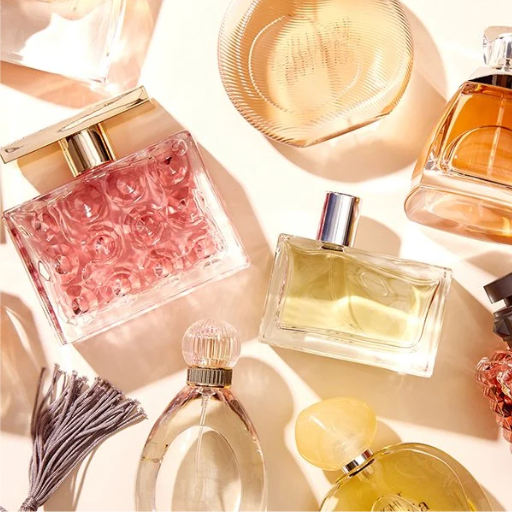
When selecting the best glass perfume bottle, prioritize the bottle’s material quality and ensure it is made from thick, durable glass to prevent breakage. Check for an airtight seal and a well-functioning atomizer or stopper to preserve the fragrance’s integrity. Consider practicality by assessing the bottle size for your intended use, such as portability or daily storage. Additionally, evaluate the design for ergonomic handling and aesthetic appeal, aligning it with your personal preferences and the perfume’s style.
Benefits of Clear Glass vs. Frosted Glass
Clear glass offers better visibility of contents and aesthetic clarity, while frosted glass enhances privacy and provides a matte, modern finish.
|
Key Point |
Clear Glass |
Frosted Glass |
|---|---|---|
|
Visibility |
High, fully transparent |
Limited, diffused light |
|
Aesthetic |
Sleek and elegant |
Matte, modern design |
|
Privacy |
Minimal privacy |
Enhanced privacy |
|
Durability |
Susceptible to fingerprints |
Resists fingerprints |
|
Usage |
Display purposes |
Private storage |
|
Style |
Traditional appeal |
Contemporary look |
|
Maintenance |
Requires frequent cleaning |
Low maintenance |
Exploring Amber Glass Benefits
- UV Protection: Amber glass effectively blocks harmful ultraviolet (UV) rays, preserving light-sensitive contents such as perfumes and essential oils.
- Durability: Known for its strength, amber glass offers excellent resistance to breakage and wear, making it ideal for repeated use.
- Sustainability: Amber glass is 100% recyclable, contributing to eco-friendly and sustainable packaging solutions.
- Chemical Stability: It is non-reactive and ensures the integrity of the product by preventing chemical interactions with its contents.
- Aesthetic Appeal: The rich, warm hue of amber glass enhances the perceived quality and luxury of the packaged product.
Considerations for Decorative Glass Options
When selecting decorative glass options, I would focus on several key factors to ensure an informed decision. Based on insights from leading sources, here are the primary considerations and corresponding technical parameters:
- Design Versatility
Decorative glass should offer a wide range of design patterns and finishes to complement diverse aesthetic preferences, including frosted, etched, or textured surfaces. For example, frosted glass provides a level of opacity favorable for privacy applications, whereas clear decorative patterns maintain transparency while adding visual interest.
- Durability and Safety
Depending on the application, tempered or laminated glass may be preferred due to their enhanced resistance to impact and shattering. Tempered glass is strengthened through a thermal tempering process and can withstand approximately 4–5 times the impact force of standard annealed glass, making it ideal for areas with high usage. Laminated glass incorporates an interlayer (typically PVB or EVA) that holds the shards together upon breakage, making it suitable for security and safety applications.
- Light Transmission and Energy Efficiency
Decorative glass solutions should balance light diffusion with energy efficiency. For instance, low-emissivity (Low-E) coatings can be applied to glass to reduce heat transfer while maintaining optimal light transmission rates. This parameter is particularly critical in architectural applications where thermal insulation is necessary.
- Eco-Friendliness
Modern decorative glass options often prioritize sustainability. Recyclable glass materials and environmentally friendly coatings align with current eco-conscious trends. It’s important to verify the certifications, such as Cradle to Cradle (C2C) or ISO 14021, for assurance of sustainability standards.
By leveraging these considerations and technical parameters, the selection of decorative glass can effectively align with both functional requirements and aesthetic goals.
What are the Key Features of Perfume Atomizers and Sprayers?
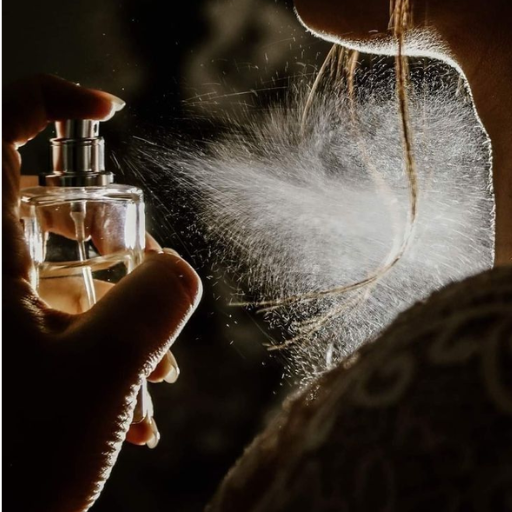
Perfume atomizers and sprayers are designed to deliver a fine and even mist that enhances the fragrance application experience. Key features include precision-engineered nozzles that ensure controlled dispersion, ergonomic designs for ease of use, and compatibility with various bottle sizes. High-quality materials such as corrosion-resistant metals or durable plastics are often utilized to prevent degradation caused by the liquid’s chemical composition. Additionally, advanced sealing mechanisms minimize evaporation and leakage, preserving the fragrance’s integrity over time.
Understanding Fine Mist Technology
Fine mist technology operates through the transformation of liquid into microscopic droplets, typically ranging between 20 to 60 microns. This is achieved by using mechanisms such as pressurized nozzles, ultrasonic vibrations, or piezoelectric components, which break the liquid into uniform particles. The precision of the droplet size ensures even distribution, enhancing application efficiency for a variety of use cases, including personal care, medical delivery systems, and industrial solutions. Additionally, advancements in atomization technology have integrated energy-efficient designs and environmentally friendly materials, ensuring sustainable practices without compromising performance.
Choosing the Right Spray Mechanism
Selecting the most suitable spray mechanism requires evaluating several technical parameters tailored to the intended application. Based on insights from leading sources, these are key considerations:
- Spray Pattern and Coverage
The desired spray pattern (e.g., full cone, hollow cone, fan) is critical for ensuring appropriate coverage depending on the application. For example, agricultural sprays often benefit from flat-fan patterns for even row coverage, while industrial cooling processes may require full-cone patterns for efficient heat dissipation.
- Droplet Size and Distribution
Precise droplet size, typically measured in microns, correlates with specific application requirements. Medical nebulizers often aim for droplets between 1-5 microns to ensure deep lung penetration, while commercial cleaning systems may require larger droplets for surface coverage. Ensure the droplet size is consistent to avoid waste or inefficiency.
- Flow Rate and Operating Pressure
The flow rate, measured in gallons per minute (GPM) or liters per minute (L/min), and the operating pressure (PSI/bar) directly impact the performance of the spray mechanism. Agricultural sprayers, for instance, often operate with flow rates of 0.2-2.0 GPM at pressures of 15-60 PSI, ensuring precise delivery without drift.
- Material Compatibility
The construction materials of the spray mechanism must be compatible with the liquids or solutions used. For corrosive chemicals, stainless steel or specialized alloys are recommended, while lightweight plastics may suffice for non-corrosive applications such as water-based sprays.
- Energy Consumption and Efficiency
For sustainable operation, consider mechanisms designed for energy efficiency. Piezoelectric and electrostatic atomizers have gained popularity due to their low power requirements without sacrificing performance.
By analyzing these parameters in relation to your intended application, you can make an informed decision about the most effective spray mechanism. Ensure to review technical data sheets (TDS) and consult manufacturer specifications for precise performance characteristics.
Comparing Pump vs. Roller Application
Pump and roller bottles for perfume differ in application method, dosage control, precision, portability, and hygiene.
|
Parameter |
Pump |
Roller |
|---|---|---|
|
Application |
Spray |
Roll-on |
|
Dosage Control |
Adjustable |
Fixed |
|
Precision |
High |
Moderate |
|
Portability |
Less compact |
Compact |
|
Hygiene |
Minimal contact |
Direct contact |
How to Source Wholesale Glass Bottles for Your Business?

To source wholesale glass bottles effectively, start by identifying your specific requirements, including bottle type, size, and design. Research reputable suppliers through online directories, trade shows, or industry associations. Evaluate suppliers based on quality, pricing, minimum order quantities, and delivery options. Request samples to ensure the product meets your standards. Negotiate terms such as lead times and bulk discounts. Finally, establish a reliable partnership by reviewing contracts and maintaining clear communication with your chosen supplier.
Benefits of Bulk Purchasing
- Cost Efficiency: Discounts based on the number of units ordered often provide substantial savings; therefore, ordering in bulk is more economical as the per-unit cost will drop.
- Inventory Management: A large stock level of items ensures a continual supply of stock, thereby mitigating the risk of shortage and alleviating disruptions.
- Improved Supplier Relations: Regular bulk purchases help nurture relationships with suppliers which can result in more favorable agreements and other benefits such as expedited services.
- Reduced Packaging Waste: The quantity of packaging materials used is reduced when buying in bulk, which enhances the environmental-friendliness of operations.
- Time Savings: Reduced frequency of procurement activities such as purchasing or ordering improves process efficiency as a result of consolidating orders.
Evaluating Wholesale Suppliers
When evaluating wholesale suppliers, I focus on three key factors to ensure reliability and alignment with operational goals. First, I assess the supplier’s track record, including customer reviews, delivery timelines, and their ability to handle bulk orders consistently. Second, I examine pricing structures and terms, prioritizing transparency and discounts that support cost efficiency. Lastly, I evaluate the supplier’s sustainability practices, such as minimizing packaging waste and sourcing responsibly, which align with eco-friendly business objectives. This structured approach helps in selecting suppliers that meet both immediate and long-term business needs effectively.
How to Ensure Safe Shipping?
To ensure safe shipping, begin by selecting appropriate packaging materials that shield products from potential damage during transit. Use impact-resistant and moisture-proof materials, and secure items with cushioning to prevent movement. Clearly label packages with handling instructions, such as “Fragile” or “This Side Up,” to guide carriers. Choosing a reliable shipping provider with tracking capabilities and insurance options further mitigates risks. Additionally, conduct quality control checks before dispatch and monitor shipment progress to quickly address any issues that may arise.
What are the Packaging and Decoration Options for Perfume Bottles?

Perfume bottles can be packaged and decorated using a variety of materials and techniques to enhance their aesthetic appeal and brand identity. Common options for packaging include glass, acrylic, or metal bottles, which can be further customized with finishes such as frosted, matte, or high-gloss coatings. Decoration techniques range from screen printing, hot stamping, and embossing to the application of labels or decals. Additionally, decorative caps, ribbons, or custom engravings can be utilized to create a luxurious and distinctive look. Protective secondary packaging, such as custom-designed boxes or cases, often complements the bottle design while ensuring safe transport and appealing presentation.
Innovative Packaging Solutions
Innovative packaging solutions leverage advanced materials and cutting-edge technologies to enhance both functionality and aesthetic appeal. Key trends include the use of sustainable materials like biodegradable plastics, glass, and recycled paper, aiming to reduce environmental impact. Smart packaging technologies, such as QR codes, NFC chips, and temperature-sensitive indicators, are increasingly incorporated to improve user engagement and ensure product integrity. Additionally, modular and refillable designs are gaining popularity, allowing consumers to reuse and repurpose packaging, aligning with circular economy principles. These advancements not only elevate brand perception but also meet the growing demand for eco-conscious and functional packaging solutions.
Creative Decoration Techniques
Creative decoration techniques in packaging design play an essential role in enhancing aesthetic appeal while maintaining functionality. These methods often involve high-precision processes and innovative materials to achieve striking visual and tactile effects. Below are some commonly used techniques along with their technical parameters:
1. Hot Foil Stamping
-
- Process Overview: A heat transfer process that applies a metallic or pigmented foil onto the substrate using a heated die.
- Technical Parameters:
- Temperature Range: 250°F to 350°F (121°C to 177°C), depending on the foil composition and substrate material.
- Pressure Requirement: 300 to 400 psi ensures clean and precise transfers.
- Stroke Speed: Typically 20 to 100 strokes per minute depending on equipment automation.
- Spot UV Coating
- Process Overview: A UV-cured coating applied selectively to highlight specific areas of the packaging.
- Technical Parameters:
- UV Curing Intensity: 300 to 500 mW/cm², ensuring rapid curing without surface deformation.
- Layer Thickness: 5 to 30 microns based on desired gloss level and area of application.
- Embossing and Debossing
- Process Overview: Uses custom dies to raise (emboss) or depress (deboss) portions of the packaging substrate for added texture.
- Technical Parameters:
- Die Material: Brass or magnesium for durability.
- Pressure Setting: 1,500 to 3,000 psi for crisp impressions.
- Substrate Thickness Compatibility: 0.4mm to 1mm to prevent substrate tearing.
- Digital Printing with Variable Data
- Process Overview: Offers flexible, high-resolution designs that incorporate elements like personalization or scannable codes.
- Technical Parameters:
- Resolution Requirement: 300 to 1,200 dpi for intricate graphic details.
- Ink Set Compatibility: CMYK and specialty inks (e.g., metallic or fluorescent) for enhanced visual depth.
These techniques are among the most effective in aligning brand identity with modern consumer preferences, delivering both visual impact and technical reliability. Selecting the appropriate method should consider factors such as material compatibility, production costs, and sustainability goals.
Reference Sources
-
10 Types of Perfume Bottles and Tips for Choosing the Best – Discusses various types of perfume bottles and tips for selecting the best one.
-
How to Choose the Ideal Perfume Bottle for Your Brand – Explores the materials and considerations for choosing perfume bottles, especially for branding.
-
How To Choose The Ideal Bottle For DIY Perfumers – Focuses on selecting bottles that protect and preserve DIY perfumes.
-
How to Choose the Most Suitable Perfume Bottles for Each Brand – Offers insights into choosing the best perfume bottles tailored to different brands.
-
What’s Your Preferred Bottle Size and Why? (Reddit Discussion) – A community discussion on preferences for perfume bottle sizes and designs.
Frequently Asked Questions (FAQs)
Q: What are the benefits of using a perfume atomizer?
A: A perfume atomizer is a convenient way to carry your favorite scent. It allows for easy application with a fine mist spray, ensuring even distribution. Atomizers are typically compact, making them ideal for travel or to keep in your purse. They can also be refillable, which is more sustainable and allows you to showcase multiple scents without carrying full-sized bottles.
Q: How do I choose the right size for a refillable glass bottle?
A: The size of the refillable glass bottle you choose depends on your usage and needs. Common sizes include 30 ml, 50 ml, and 100 ml. For everyday use or travel, a smaller bottle like a 30 ml or 50 ml might be suitable. For home use where refilling is less frequent, a 100 ml bottle might be more convenient. Consider your personal preference and how often you intend to carry or refill the bottle.
Q: Which materials are best for perfume packaging?
A: For perfume packaging, glass, aluminum and plastic are commonly used materials. The packaging industry prefers glass spray bottles because of their premium appearance. Aluminum is used because it is light and strong. Plastic can be made shatterproof and is usually used in designs made for traveling. Each option is suitable depending on one’s priorities which could be visual appeal, strength, or weight.
Q: What are the benefits of roll on bottles for perfumes?
A: Roll-on bottles provide a precise method devoid of mess which is best suited for applying perfume on parts such as the wrist and behind the ears. Most of them are small so they can be carried easily in a bag or a purse. Moreover, roll-on bottles help cut down the amount of perfume that is used as only small amounts are dispensed at a time.
Q: Why are fine mist sprayers recommended for perfumes?
A: Fine mist sprayers are preferred because they provide a balanced and controlled application of perfume. This not only controls how the scent is given but also prevents over sprays which can ruin the fragrance. They work best with light fragrances such as rose or lavender which are faint and need to be used in small amounts.
Q: How can I ensure my perfume bottles are environmentally friendly?
A: To ensure your perfume bottles are environmentally friendly, choose glass bottles that can be filled again or those that are made from recyclable materials such as aluminum. Check out some brands that sell perfume in bulk or wholesale perfume bottles to increase shipping and packing efficiency. Strive for more profound and simple designs that endorse eco-friendly solutions.
Q: What should I consider when selecting a perfume bottle for a gift?
A: When selecting a perfume bottle for a gift, consider the recipient’s preferences in terms of design and size. A premium-looking bottle made from quality materials like glass or bottles with metal accents can make a thoughtful and high-end gift. Ensure the perfume atomizer or glass spray bottles have a fine mist spray for an elegant application experience. You might also consider including a funnel for easy refilling.
Q: How do I refill a perfume atomizer?
A: To refill a perfume atomizer, remove the spray cap from your perfume bottle and use a funnel to pour the desired amount of fragrance into the atomizer. Some atomizers come with a pump mechanism that allows you to transfer the perfume directly without spilling. Ensure the atomizer is securely closed to prevent leakage.
Q: What are some popular sizes and shapes for perfume bottles?
A: Popular sizes for perfume bottles include 30 ml, 50 ml, and 100 ml, with 1.7 oz being a common choice for many brands. Shapes vary widely, from traditional cylindrical bottles to unique, delicately crafted designs. Your choice should reflect personal style and the practicality of carrying or displaying the bottle.

